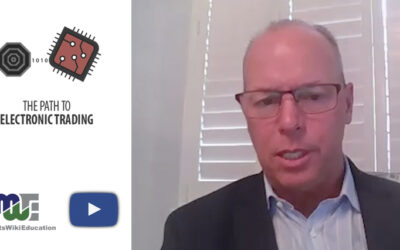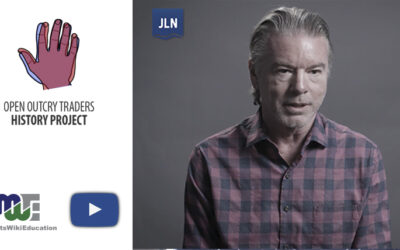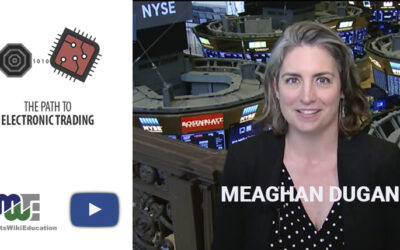THE TRIP FROM A SMALL LIBERAL ARTS COLLEGE TO THE HEIGHTS OF WALL STREET
Tim Brennan did not know what he wanted to do after graduating from a small liberal arts college with a degree in psychology. As with many other traders from this era, his mom had a friend who could get him a job as a runner at the Chicago Board Options Exchange.
John Lothian News interviewed Brennan for The Path to Electronic Trading video series.
He started at $675 per month as a runner on the CBOE trading floor and then decided he wanted to be a trader. A couple of years later he applied for a job with Morgan Stanley at the Chicago Mercantile Exchange and was hired as a trader of foreign exchange options.
He started clerking on the CME trading floor with Morgan Stanley. Then he started trading and really learned how markets work. However, when activity started to slow down, he started to look elsewhere within Morgan Stanley for opportunities.
He was hired by the equity group at Morgan Stanley at the CBOE, which started him on the path to electronic trading. After spending a few weeks on the trading floor, he moved off the floor to join the automated market making group at Morgan Stanley.
The group had started in 1999, at about the time Goldman Sachs bought Hull Trading. A Timber Hill executive joined Morgan Stanley, which decided to build an automated market making group versus buying one as Goldman had done. Brennan and a small team built the technology and, he said, “We did not know what we did not know.”
In changing from the Sun Solaris operating system to the Linnux operating system, they just decided to go live with Linnux when the risk numbers looked similar to the Sun Solaris system. However, the wheels came off when they turned the system on, he said.
“We just did not know any better,” he said, noting that ultimately “It turned out fantastic.”
Brennan left Morgan Stanley after he was moved to an Oak Brook office and received a call from a head hunting firm representing a startup Citadel.
He was hired by Citadel and on his first day Citadel CEO Ken Griffin stopped by his desk to ask what he thought. Griffin must have liked his answer, Brennan said, because he invited him to his private conference room for a meeting. “It was game on from Donkey Kong from that moment on,” Brennan said.
Brennan focused on non-engineering issues for Citadel, representing the firm before exchanges and working on order routing issues.
In the early days of hybrid trading on the floor of the CBOE, the firms needed to have a physical presence on the trading floor, even if the floor traders were not the ones streaming the quotes. So Brennan went about hiring people to pass the CBOE member test to work on the floor. Some of the people were valets from his country club and kids Brennan knew from his neighborhood as contract employees. These Citadel traders would watch movies on laptops on the trading floor and were instructed to “not make a market” when asked for one.
After Citadel he joined a high frequency trading shop in Charleston, South Carolina, called Automated Trading Desk. This firm turned into one of the first SOES Bandits and had quite a bit of success. Citigroup bought ATD in 2007, and Brennan moved back to Chicago.
His next stop was at Merrill Lynch during a time of turmoil that saw Stan O’Neal resign as CEO at Merrill and then John Thain take over as CEO in what Brennan described as a “vortex of dysfunction.”
After 9/11, Brennan had a unique opportunity to be on a panel at the CIA about trading and terrorism, an experience which he described with great enthusiasm.
Brennan said the difference maker in his career was that after having passed the membership trading test on the CBOE,he had the courage to make the jump to working with the new frontier of electronic trading.











